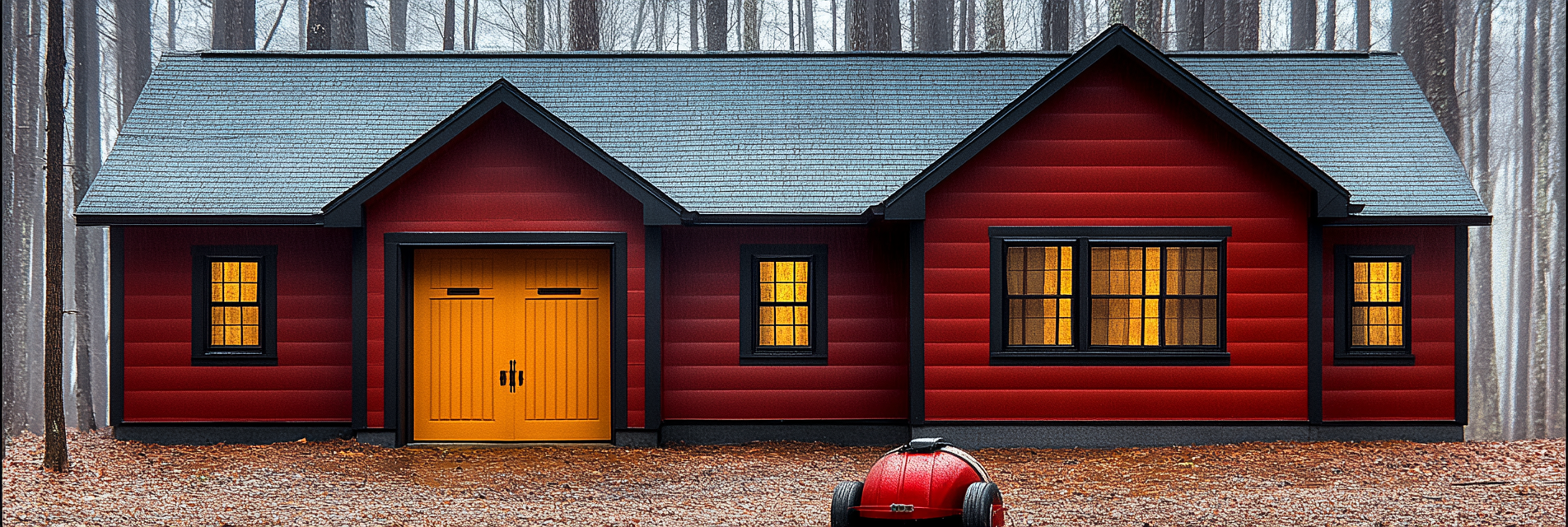Creating and practicing a family emergency escape plan will ensure that everyone in your house knows how to handle a crisis. Whether it’s a fire, flood, or other emergency, a well-rehearsed plan will help your minimize panic and guide your family to safety. This post outlines how to design, implement, and practice an effective family escape plan for your family here in the Tri-Cities.
1. Identify Potential Hazards
Understanding the types of emergencies your home may face helps tailor your plan effectively, whether you live in Richland, Pasco, Kennewick, or any of our outlying areas.
Assess Common Risks: Consider the most likely emergency, such as fires, floods, wind (most likey here in the Tri-Cities). Tailor your escape plan to address these specific scenarios. Map Potential Hazards: Identify areas in your home where hazards could arise, such as kitchens (fire) or basements (flood).
2. Plan Multiple Escape Routes
Having more than one escape route makes sure you still can get out if one area is blocked.
Draw a Floor Plan: Sketch out your home’s layout and mark two exits from each room, including windows and doors. Plan for Two Levels: If your home has multiple stories, plan escape routes for each floor and include emergency ladders if needed – you can get one in the Dryer Fire Fighters Online Store.
3. Choose a Safe Meeting Spot
Designating a meeting place outside your home will ensure that everyone knows where to regroup.
Select a Location: Pick a spot that’s a safe distance from your home, such as a neighbor’s yard, a nearby park, or a landmark. Communicate the Location: Ensure all family members, including children, understand where to go and how to get there.
4. Establish Roles and Responsibilities
Assigning tasks will improve your plan and minimize confusion.
Designate Responsibilities: Assign one person to assist young children, another to grab emergency supplies, and another to check that everyone is accounted for, etc. Plan for Pets: Include instructions on how to safely evacuate pets and designate who will be responsible for them.
5. Practice Your Plan Regularly
Rehearsing your escape plan helps everyone understand their role and builds confidence.
Conduct Drills: Schedule practice drills at least twice a year. We recommend practicing your fire escape plan more often (as that is the most common threat we face in our homes). Run them during different times of day (definitely practice at night, too!) and under varied conditions to simulate the scenario. Review: After each drill, discuss what went well and what needs improvement.
6. Teach Emergency Skills
Equip your family with basic emergency skills that can be invaluable during a crisis.
Teach “Stop, Drop, and Roll”: Ensure that everyone knows how to extinguish a fire on their clothes. Educate on Smoke Safety: Teach family members to stay low and crawl under smoke to avoid inhaling toxic fumes. Make it fun for the kids so they are willing to practice and retain the information. Show How to Use Exits: Make sure everyone knows how to unlock and open all doors and windows, even in the dark.
7. Prepare Emergency Supplies
Having essential supplies on hand can make evacuations safer and more efficient.
Create a Go-Bag: Pack a bag with items such as water, non-perishable food, first aid supplies, flashlights, batteries, and personal items. Keep it in an easily accessible location. Include Important Documents: Add copies of IDs, insurance policies, and medical records to really be ready.
8. Plan for Special Needs
Ensure that your plan accommodates everyone in your family.
Assist the Elderly or Disabled: Plan how to help individuals who may need additional assistance during an evacuation. Consider Medical Needs: Keep necessary medications and mobility aids ready for quick access.
9. Communicate with Neighbors
Building a community network can help during emergencies.
Share Your Plan: Discuss your plan with trusted neighbors. Create a Support Network: Use NextDoor or your neighborhood Facebook group to coordinate.
Conclusion
Creating and practicing a family emergency escape plan includes identifying hazards, establishing clear routes, assigning responsibilities, and running regular drills. You and your family will be ready to face an emergency and could save lives. We recommend that every family in Richland, Kennewick, Pasco, and all our outlying areas take the time to create and rehearse an escape plan tailored to their specific needs.
Serving the communities of:
Kennewick | Pasco | Richland | West Richland | Finley | Burbank | Benton City | Prosser | Grandview | Connell
As the sole certified dryer exhaust technician recognized by CSIA.org in the Tri-Cities area, Paul brings a wealth of expertise to fire prevention. His primary focus lies in addressing the root cause of many residential fires: lint buildup in dryer cavities and vents. Through rigorous inspections and thorough cleanings, Paul ensures that families and businesses can enjoy peace of mind, knowing their properties are safeguarded against fire risks.









































